Are you wondering how coin grading works? Do you want to know how to grade coins? You’re in luck, as this article contains all the information you need. So, stick to the end and you’ll learn about the grading system, third-party grading services, and how to grade coins yourself.
Why Grade Coins? (Purpose for Grading)
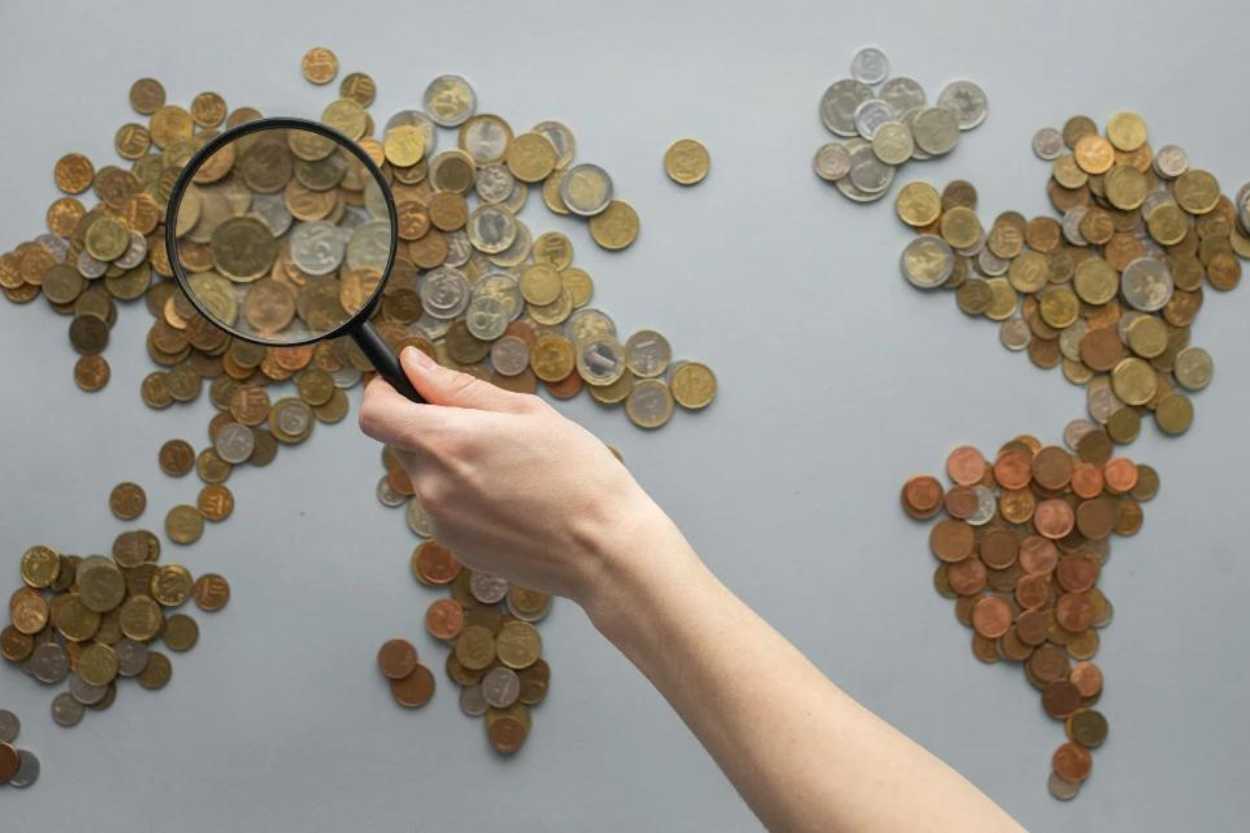
The main purpose of coin grading is to determine the numismatic value of a coin. In the not-so-distant past, there was no standard way to determine the worth of a coin, and people gave different values to their coins as they saw fit, often leading to disagreements between collectors.
But coin grading solved that problem, as it introduced a universally accepted standard for coin valuation. It also brought about third-party grading services like PCGS and NGC that have made coin collecting easier for dealers and collectors alike. That’s because a certification by a reputable third party reassures buyers of the authenticity of the coin they’re getting.
As for the dealers, third-party grading services help protect their investments, as graded coins are encapsulated in protective shells that prevent damage from handling, humidity, and oxidation, which would otherwise impact the coin’s value.
Coin Grading Levels: The Sheldon Scale
As mentioned earlier, coins weren’t always graded as they are today. Before the grading system was introduced, coins were simply classified as good, fine, or uncirculated. But you can see that there’s an obvious flaw with such a simple system; some coins are finer than others, and some uncirculated coins are better-looking.
So, it soon became clear to collectors that a more precise system was needed and in 1949, renowned numismatist and physician Dr. William Herbert Sheldon developed a system to grade large cents (l793 –1857 pennies). He used a numerical scale of 1 to 70 to assign grades to coins based on their appearance and condition.
In the early 1970s, the American Numismatists Association (ANA) decided to modify the Sheldon scale and adopt it for all US coins, not just large cents. The grading scale we use today is a modified version of the original. One of the changes was to increase the grades for MS coins from 3 to 11 and add two more grades for “about uncirculated” coins.
The 70-Point Grading Scale
You can think of the 70-point scale as having three different subcategories.
- The first category is the circulated grades between 1 and 50. These grades are for coins that show signs of wear from being circulated and passed through different hands as money.
- The second category is about or almost uncirculated. These grades run from 50 to 58. Generally, coins in this category have never been used for commerce, but they bear marks and scratches from passing through counting machines, so they’re not considered fully uncirculated.
- The final group is the uncirculated grades. These are the highest grades, starting from 60 to 70. Uncirculated grades are for coins that show no signs of wear since they were never circulated or passed through counting machines.
Though the modified Sheldon scale runs from 1 to 70, not all the numbers are used. The most common grades are explained below.
Poor (P1), Fair (F2): Coins of these grades are virtually unrecognizable due to wear. Only the date, denomination, and mint mark can be discerned with careful observation.

About Good (AG3): An “About Good” coin has approximately 10% of the original design. The rims of the coin have been worn into the fields, erasing some of the edge lettering.
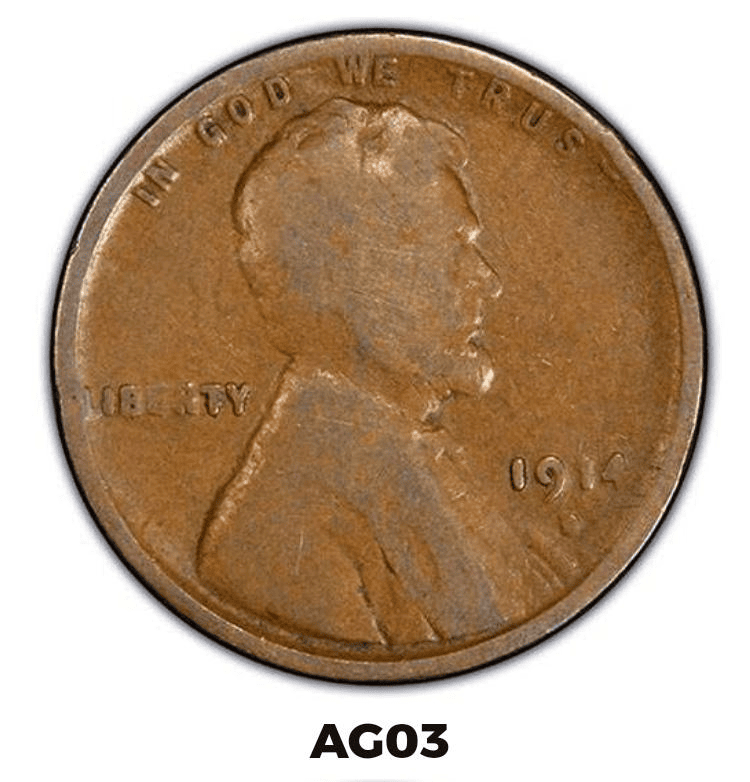
Good (G4): This grade is for coins that have around 15% of the original design, with flat rims that have merged into the peripheral lettering. But all the letters and dates are visible.
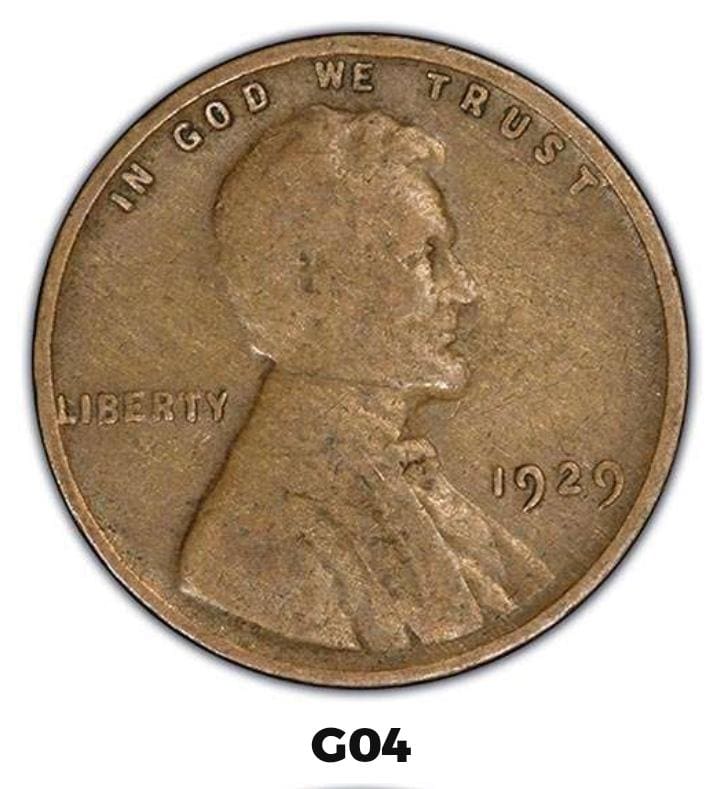
Very Good (VG8): Coins of this grade retain roughly 25% of the coin design. The rims of the coin are partially separated from the lettering.

Fine (12): A “Fine” coin will have about 40% of the original design. The rims will be full and clearly separated from the edge lettering, which is sharp and easy to read.
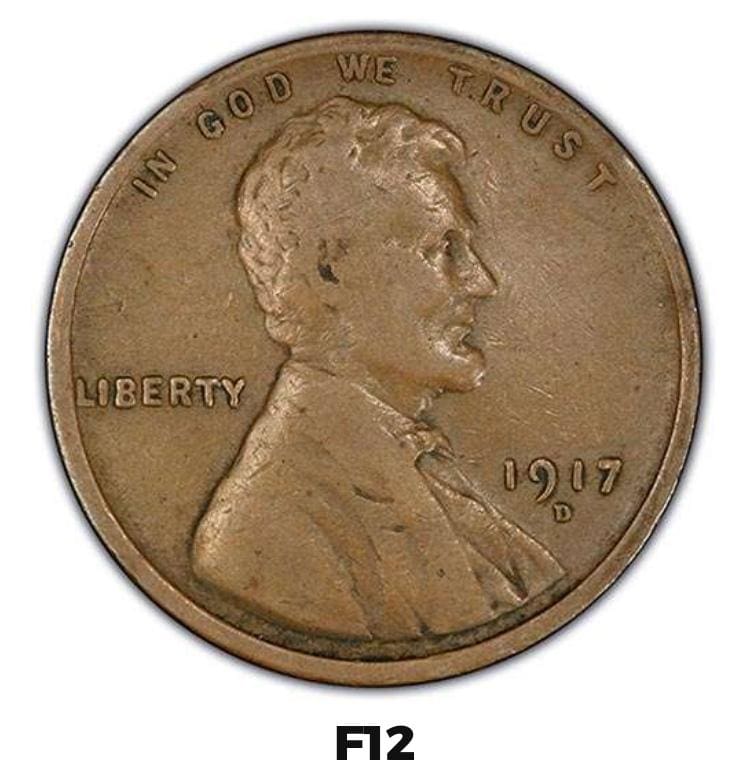
Very Fine (VF20): At this grade, coins show moderate wear, the lettering is full and clear, and all design elements are visible. Recessed parts of the design are also visible, but the high points are weak.
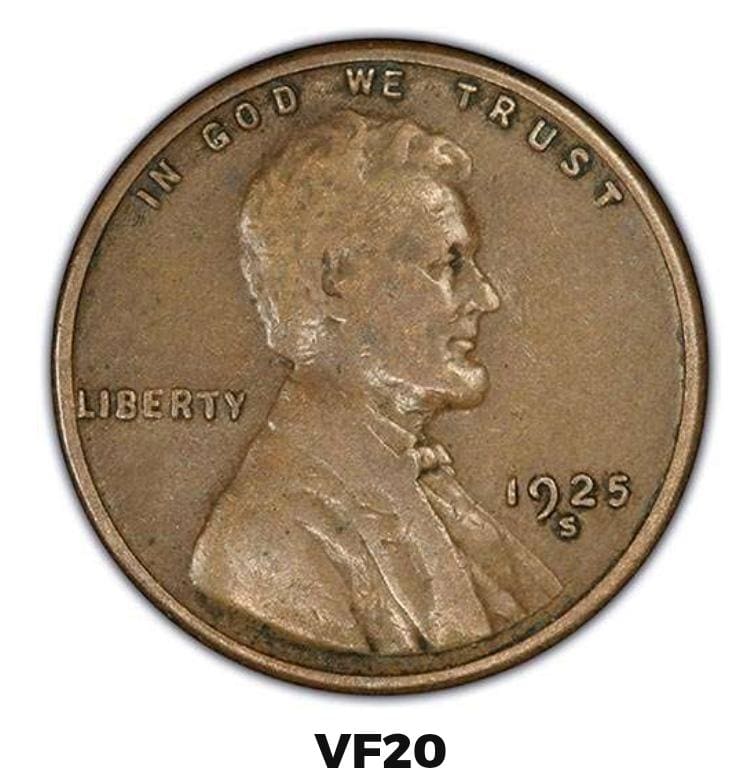
From VF20, the focus shifts from identifying what design elements are visible to determining what details are missing.
Extremely Fine (XF40): This grade has about 80% of the coin’s original design. All the internal details are clear, with only the high points showing signs of wear. The coin may have some mint luster.

About Uncirculated (AU50): These coins have more than 90% of the coin design present, and any signs of wear are restricted to the high points like the hairs or tips of eagle feathers. The coin will also have some noticeable mint luster.
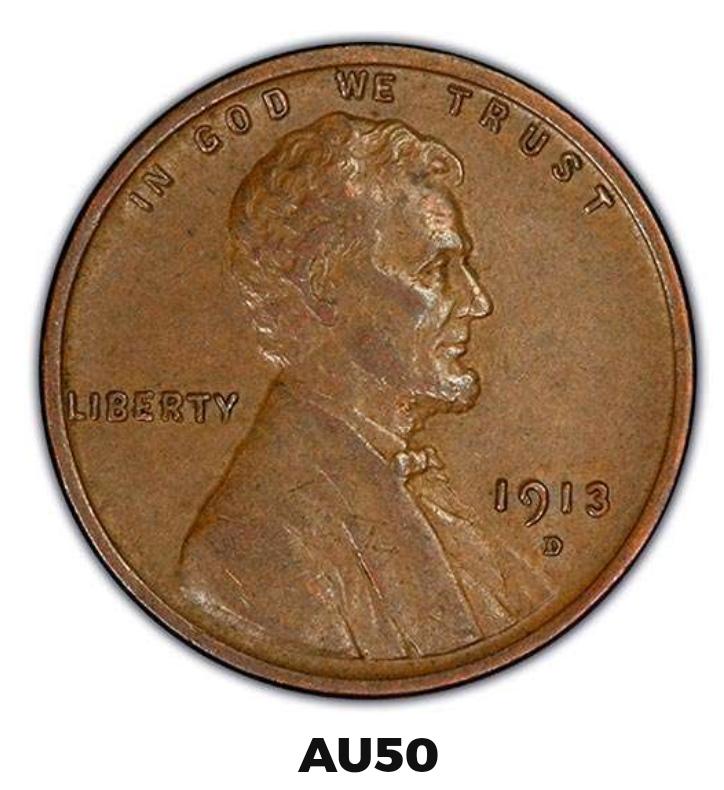
About Uncirculated (AU55): Again, more than 90% of the coin design is present, and signs of wear are restricted to the high points. The luster of the coin is high.
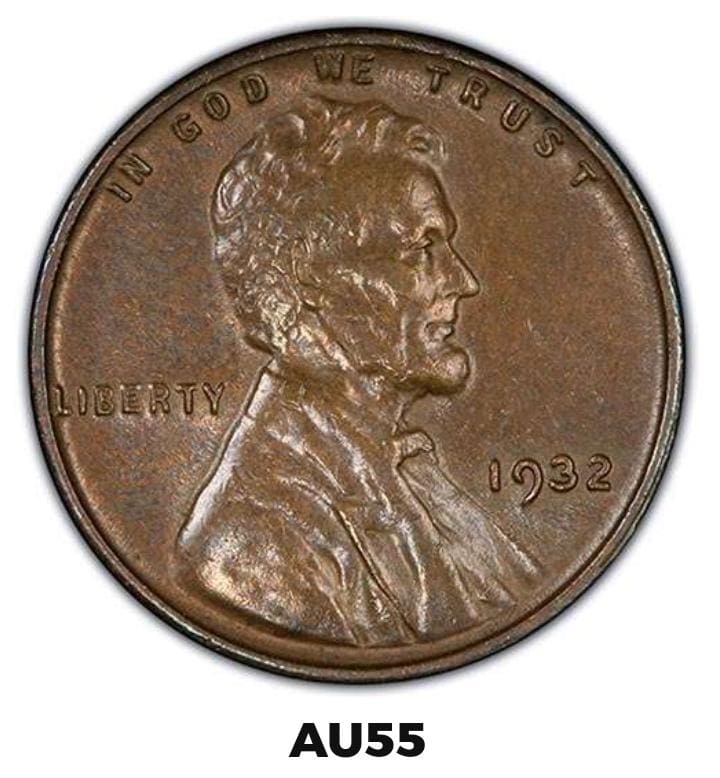
About Uncirculated (AU58): Coins at this grade will have only the slightest wear (less than 5%) at the highest points and with almost full mint luster

Mint State (MS60): An MS60 coin is uncirculated. It shows no evidence of wear but is heavily abraded and has a weak strike, reduced luster, and not-so-great eye appeal
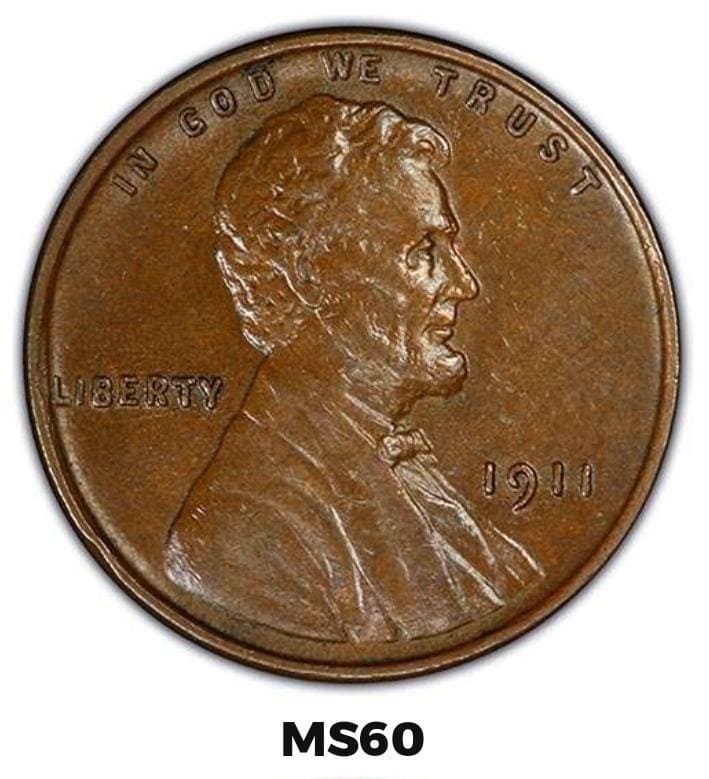
MS63: This grade is for coins with average strike, average abrasion, and some hairlines. The luster is also average.

MS65: At this grade, coins have good strike with full mint luster, above average eye appeal, and moderate marks and hairlines.
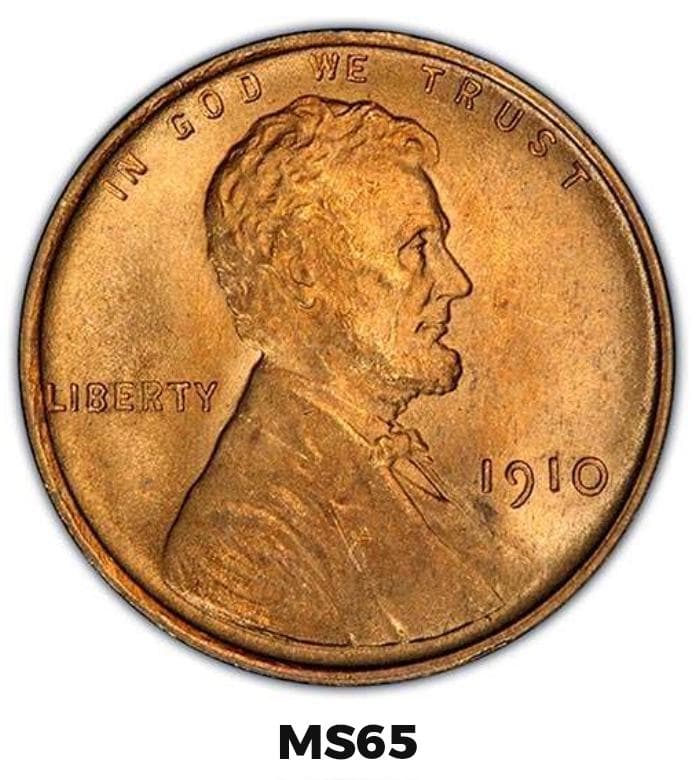
MS68: Very sharp strike and full original luster with no hairlines and only a few imperfections.

MS69: Coins of this grade have a very sharp strike, great eye appeal, full luster, no hairlines, and just one or two tiny imperfections.
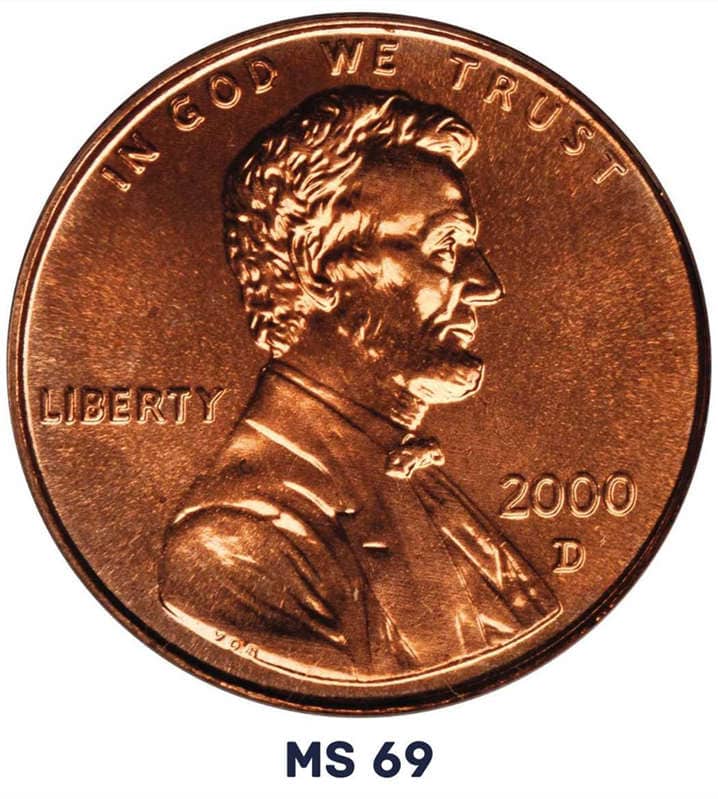
MS70: This is a perfect coin with no visible or detectable imperfections under magnification.

| Grade | Numerical Value | Percentage of Wear |
| Poor (P) | 1 | More than 95% |
| Fair (F) | 2 | 90-95 |
| About Good (AG) | 3 | 85-90 |
| Good (G) | 4,6 | 75-85 |
| Very Good (VG) | 8,10 | 60-75 |
| Fine (F) | 12,15 | 40-60 |
| Very Fine (VF) | 20,25,30,35 | 15-40 |
| Extremely Fine (EF) | 40,45 | 10-15 |
| About Uncirculated (AU) | 50,53,55,58 | 5 – 10 |
|
Mint State (MS) | 60 |
Uncirculated coins show no evidence of wear. |
| 61 | ||
| 62 | ||
| 63 | ||
| 64 | ||
| 65 | ||
| 66 | ||
| 67 | ||
| 68 | ||
| 69 | ||
| 70 |
How to Grade Coins
Coin grading deals with the appearance of a coin. As such, the factors that affect or determine the grade of a coin are physical, such as the tone, strike quality, eye appeal, luster, and amount of wear. For you to be able to grade a coin, you’d need to observe and consider each of those factors critically.
Required Tools for Grading Coins
Light source
The first thing you need is a light source to examine the coin and look for imperfections. You should know that not every type of light is suitable for coin grading. For instance, fluorescent bulbs are not ideal, as the light is indirect and will not allow you to see the details of the coin. Similarly, halogen lights are also not recommended as they tend to be too bright.
The best light for grading is a 70 to 75-watt incandescent bulb. The light is not too intense and allows you to see the entirety of the coin without glare. Tensor lights are also an acceptable substitute for grading.
Magnification tool
You’ll also need a high-quality loupe with a low magnification power of 5X to 10X. This is one of the times when less is better, as higher magnification brings up details that aren’t necessary for grading; anything above 10X is more suited for detecting counterfeits than grading.
Use loupes with multiple lenses, as they provide a flat field without distortion. Single lens loupes usually aren’t flat and introduce lots of distortion at the edges.
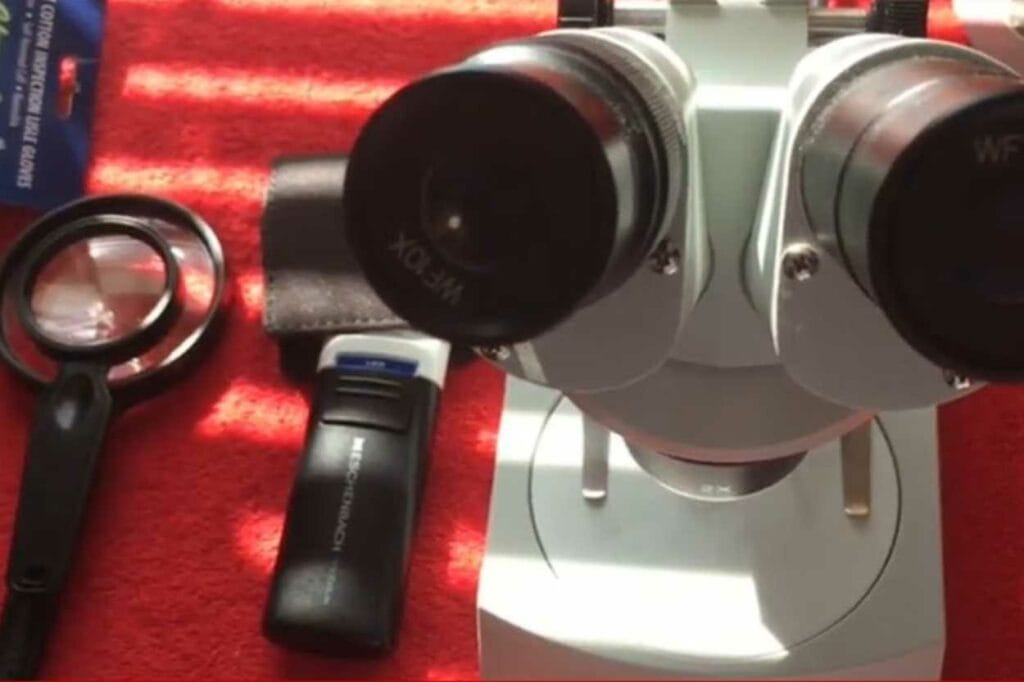
Reference guides
The last thing you need is a reference guide to compare your coin with. This could be online resources like photo grades or books like the ANA grading standard for US coins which contains pictures and descriptions of all grades of US coins. When starting out with grading, it’s good to use as many resources as possible.
Methodology
First, have a quick look at the coin without using any magnification tool. Doing this will allow you to get an overall impression of the coin, and the possible grade it could be. From your inspection, try to establish whether it’s circulated, about circulated, or uncirculated.
Next, look at the coin through the magnification loupe. Be sure to rotate the coin under the light, and inspect it from a wide range of angles. Some scratches or imperfections are only visible from certain angles, and you need to tilt the coin for these imperfections to show.
Be sure to also check the rims and fields for damages. Most beginners tend to focus only on the main devices or images, forgetting the field and rims. Check for nicks on the rims and scratches on the fields.
Note your observations. Write down the areas that are worn, abraded, scratched, and weak strikes. Finally, compare your notes and observations about the coin to a reference guide. Try to match the coin to a grade with an appearance that matches your notes and observations as much as possible.
Special Considerations in Coin Grading
Not all coins are graded the same way. Some, like proofs, errors, varieties, and cleaned coins, are graded differently due to their nature.
Proof vs. Business Strikes

Business strike coins are those intended to be used by the public for commerce. These are graded anywhere from 1 to 70, depending on the look, strike, luster, and even mint mark.
Similarly, Proof coins are also graded on a scale of 1 to 70. But in practice, only the latter part of the scale applies to proof coins as they are graded between 60 and 70. The reason for this is that proof coins are special and not intended for circulation or commerce but meant for collectors. As a result, most proof coins you come across will be uncirculated and in mint condition so there is no need for the lower grades.
But occasionally, a proof coin may not be in mint state. But rather than grading it below 60, such coins are instead called impaired proofs.
Varieties and Errors
Professional coin graders carefully observe each coin and assign the grade based on appearance, strike quality, luster, wear, and eye appeal. The grading process also establishes whether a coin is a variety, an error, or just a regular.
A variety is a coin with a characteristic shared by other coins with the same date, denomination, and mint mark. It’s often the result of the striking die and happens when certain die characteristics get repeated on several coins.
If a coin is a variety, the graders will indicate it on the label along with the grade. The variety doesn’t influence the grade of a coin, but it can affect the value, as varieties are usually more desirable than the base coin. For example, double die obverse (DDO) varieties are one of the most popular varieties among numismatists and can cost twice as much as the base version of the same coin.
On the other hand, an error is usually not associated with a die and can be due to several factors like a defective planchet, machine malfunction, etc. As such, errors are unique and differ from coin to coin.
Grading services will also indicate any mint errors a coin has. Like varieties, errors also do not affect a coin’s grade but can affect its value. But not all errors increase the value of a coin, some are just too trivial to have an impact. For instance, a wrong planchet error can increase a coin’s value by up to five times, but a 5% misaligned error will have little effect. Generally speaking, the more dramatic an error, the higher the value, but the grade remains unchanged.
Cleaned Coins
As the name suggests, these coins have been cleaned by acid dipping, abrasives, or burnishing/polishing. The aim is to remove undesirable substances and make the coin more appealing as a way to increase the value.
But the opposite is usually the case, as most coin-cleaning methods strip off some of the metal from the coin’s surface. As a result, cleaned coins are rarely ever given a grade since the surface has been tampered with and the coin isn’t in its original state. Most grading services will simply package the coin and add a label indicating it was cleaned.
The Process of Professional Grading
You can learn to grade coins yourself and with high accuracy, too. But sometimes, it’s best to have your coins graded by a professional grading service as it certifies and authenticates the worth and value of your coin.
The Role Of Third-party Grading Services
Not everybody can grade or even wants to grade coins themselves. Hence the need for professional grading services.
But beyond that, professional grading services act as a judge or arbiter, as whatever grade is assigned to the coin will be respected by every person. This removes any uncertainty of the value of a coin and allows for seamless coin exchange and transactions.
There are a number of third-party grading services out there, but the most respected ones are;
- American Numismatists Association Certification Services (ANACS)
- Professional Coin Grading Services (PCGS)
- Numismatic Guaranty Company (NGC)
- Independent Coin Graders (ICG)
- Certified Acceptance Corporation (CAC)
ANACS

Established in 1972 by the American Numismatists Association, ANACS is the oldest third-party grading service in the US. The company has been sold and resold a couple of times, and these days, it’s not as popular or respected as it used to be. Still, many collectors, especially beginners, still use the service.
Pros
- Affordable fees
- Quicker turnaround time
- Allows direct submission
Cons
- ANACS-certified coins do not command the same value as PCGS or NGC coins.
- Grading standards may be a bit low.
PCGS

PCGS was established in 1985 and is perhaps the most esteemed coin-grading service in America. It’s often used by advanced collectors to grade high-value and extremely rare coins.
Pros
- Coins graded by PCGS generally have the highest market value
- Grades coins from over 100 different countries
- Great customer service
Cons
- High fees
- Grading standards are strict, to the point of possible undergrading
NGC

The NGC was started in 1987 and is widely considered the second-best grading service after PCGS. Still, the NGC is very popular and grades numerous coins for beginners and long-time collectors.
Pros
- NGC coins have good resale value
- Accurate and consistent grading
Cons
- Fees are high, only slightly cheaper than PCGS
ICG

ICG is the least popular grading service despite being as old as the NGC. The general consensus among numismatists is that the grading isn’t consistent or very accurate, and as a result, ICG-graded coins retail at considerably lower prices than those graded by PCGS or NGC.
Pros
- Affordable fees
- Grades and certifies ancient coins
- Short delivery time
Cons
- Inconsistent grading standards
- ICG coins don’t have good market value
CAC

CAC isn’t a grading service in the conventional sense. They’re more of an evaluator for the other grading services. They inspect graded coins to see if the grading companies gave an accurate grade. Coins that pass the inspection get a CAC sticker and certification, and such coins have a higher value than those without the CAC certification.
Pros
- It can drastically increase a coin’s value.
- Turnaround time is fairly quick.
How Professional Grading is Done (Encapsulation and Certification)
Most third-party grading services only accept direct submissions if you have a paid membership. If not, you’ll have to send the coins through an authorized dealer.
The first thing the graders do after receiving a coin is check that it hasn’t been cleaned and isn’t a counterfeit.
Next, multiple graders examine the coin separately and assign a grade to the coin. They use different graders to ensure that the coin gets an accurate grade.
After the grading is done, the coin is put in a protective shell with a label that states details like issue date, mint mark, denomination, variety or error (if applicable), identification number, and most importantly, the grade of the coin.
Once that’s done, the shell is sealed to protect the coin from damage due to moisture, air, and handling and, at the same time, provide a suitable way to observe the coin.
Finally, pictures and details of the coin are uploaded to an online database so that anyone can look up the coin to verify its authenticity. The graded coin will be shipped to the owner.
Tips for Beginner Graders
Grading can be a bit overwhelming the first time. You need to observe the coin properly and also consider many factors before you assign a grade.
But when you get a hang of it, coin grading can be a rewarding skill. Here are a few tips to help you out.
Getting Experience Is Important
Experience is the best teacher, and this is true for grading. The only way you’ll get better is if you keep practicing.
Your first attempt might not be too great, but as you gain more experience by practicing with different coins, you’ll definitely improve.
Join Local Coin Clubs and Numismatists Associations
Coin clubs and associations are important parts of the coin collection world because they provide a way to connect collectors and share knowledge.
Clubs frequently have free educational seminars, events, and resources that can help newbies with coin collecting and grading.
Another benefit of joining clubs is that it gives you access to experienced numismatists, dealers, and collectors who can provide mentorship, show you the ropes, give suggestions, and point out your mistakes.
Conclusion
Coin grading helps to determine the value of a collectible coin. With the proper tools and instruction, you can learn to grade coins yourself. But it’s best to have coins professionally graded Doing so will certify the coin as legit, protect it from damage, and increase the market value.

Jenson is a professional numismatist, a dedicated coin collector, a graduate of the College of Business at Oregon State, a life member of the American Numismatic Association (ANA), and an overall coin nerd. He is the founder of Coin Value List.
